Perhaps only Californians and Texans can appreciate the issues of living in a state more than 400 miles long. The changes in climate and plant life can be significant. Florida goes from temperate to tropical. Mid-state and north this time of year Wax Myrtles are berry-less. Go south two or three hundred miles and you have a tree happily fruiting like the one above in Port Charlotte.
Wax myrtle berries are hard, bitter and waxy. Despite that they do have a couple of uses. One is as a spice. They can be dried, put in a pepper mill, and used on strong-flavored meats such as game. The berries’ wax can also be used to make a smokeless candle that keeps away insects, the original Bayberry Candle. Harvesting the wax however is a messy chore and I suspect only done out of necessity which means only when the insects were really bad did you try to make the candle. I’ve also heard of people making wine out of the berries but I suspect that was desperate prisoners. The shrub’s leaves are also useful. To read more about the Wax Myrtle go here.
Locally the tallish yellow bloom you see roadside this time of year will probably be Wild Radish or Wild Mustard. You will usually find one or the other, not both in the same patch though they can hybridized. Mid-state I see a lot of Wild Radish, along the west coast and southern part of the state it is usually Wild Mustard but those locations are not exclusionary. They are used the same way, resemble each other well, and have the same season. But there are several small differences including growth pattern, blossom placement, veins on blossom petals and position of seeds in their tooth-pick like pods. Each of the articles highlighted above mentions the ways to tell them apart.
Another plant with a yellow blossom starting to be seen again this year is the Hairy Cowpea. Related to Mung Beans and the Black-eye Pea, the Hairy Cowpea is unusual in that it likes to be near water. It doesn’t grow in water but it is rare to find it more than 100 feet or so way from water. Perhaps it likes a certain level or humidity. While the peas are edible cooked they are not great. However, the yellow blossom is edible raw or cooked and tastes like raw peas or green beans. To read more about the Hairy Cowpea go here.
In nearly every class and daily on line I am asked if I can identify a plant if a picture is sent to me. I say I will try and also suggest the sender join the Green Deane Forum. There’s a UFO page there, Unidentified Flowering Objects. On the forum we chat about foraging — and other topics — every day along with techniques to harvest and use the bounty you have found. And it’s not just about Florida or the southeast. There are members from all around North America and the world. The link to join is on this page just to the right of this article. You do have to pick a screen name and the forum let members private message each other. There are only three rules: Keep it civil, keep it clean, and try to avoid mentioning Wikipedia (which Green Deane has a significant dislike for.) Recent topics include Wild Possum Grape Jelly, Young People Want Healthier Food, Leather Root? Horsemint, Blueberries in January? UFO Weed, Darryl Patton Herbalist, Duckweed, Shaggy Mushy, Mystery Tree, Gnarly Mushroom, Brain Tan, and Linguist Overdrive.
We’re a little less than two weeks away from the Florida Earthskills gathering in Hawthorn Florida, Feb 5-8. It’s an opportunity to learn, share and experience sustainable living skills. I have taught there for the last two years and will be there again this year, teaching on Friday morning and Saturday morning. That’s intentional so I can attend two mushroom classes in the afternoon. There are virtually dozens of classes to sign up. Other classes include wild medicine, wild foods, didgeridoo making and playing, buckskin sewing, fire making, yoga, insect study, cabbage palm basketry, bow making, bird songs, atlati throwing, permaculture, mushrooms and a whole lot more, several somethings for everyone. To learn more about this Florida Earthskills gathering and sign up go here.
Later in February is the Florida Herbal Conference, Feb 27 to March 1st, I’ve taught edible plants there for the last three years and will be there again this year with three classes. I wake folks up with a 7 a.m. class on Saturday and Sunday and a second class on Saturday a 9 a.m. The conference is a must for all southern herbalists and well as those northern ones who want to escape the cold and study their craft in the dead of winter. It always has interesting speakers and great classes. While there is some cross over between Earthskills and Herbalism the conferences are sufficiently different to justify attending both. For more information and to register go here.
Foraging Classes: Most of the next six weeks I am attending conferences and the like so my class schedule between now and March will be light. Sunday, February 8th, Boulware Springs Park, 3420 SE 15th St., Gainesville, FL 32641. 9 a.m. Meet at the picnic tables next to the pump house. Bring tick spray. Sunday, February 22nd, Mead Garden: 1500 S. Denning Dr., Winter Park, FL 32789. 9 a.m. Meet to the right (east) of the Bartram sign. For more information or to sign up for a class go here.
I’m past retirement age. I’m also past the point of being tired of being told how green we are today and how ungreen we were in the past. Oh? When I was a kid:
We didn’t all drive en mass to the store to buy milk. Milk was delivered, by one man in a milk truck. And milk came in reusable, recyclable bottles that you could also use for other things. Baked goods were delivered the same way. And vacuum cleaners! How ungreen of us.
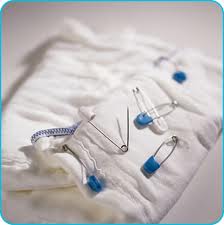
Diapers had pins, not tabs
Our neighbor, who raised seven kids, washed cloth diapers because there weren’t disposables then. I wonder why no one champions recycling disposable diapers? We just toss them in land fills, vertical septic systems. And those cloth diapers were dried on a clothes line, an artifact found only in museums and my backyard. We did not use a 220 volt soon-to-wear out machine to dry clothes or start house fires. And kids got hand-me-down clothes, not the latest designed-for-them fashion seasonally. I got new clothes once a year, ordered out of a catalog for school. Rummage sales were community recycling. How ungreen of us.
We didn’t get a TV until I was nine, a small black and white set we put on the window sill. It got three channels if the weather was good and you held the antenna just right. A PSB channel would not be added for a decade. Programming was wholesome and no censoring was needed for kids or grandma. We actually watched it as a family. One TV, not one in every room. It did not have a digital color screen twice the size of the window. How ungreen of us.
In the kitchen stuff was mixed, blended, chopped and beaten into submission by hand. No blenders, no food processors, no mixers. How many folks are willing to blend their environmentally healthy nutritious smoothies by hand? What’s the collective carbon footprint of all those blender macerating food from halfway around the world? We prepared our food by hand rather than buying it prepared. We never bought vegetables in a package, or hardly anything else. We put up food in reusable glass containers. It was called canning, a verb I don’t hear too often these days. Nearly everyone cooked their own food, at at home and ate together. Today most people do not cook, do not eat at home and do not eat together. We also packaged fragile items for mailing with old newspaper not Styrofoam or plastic bubble wrap. We didn’t own plastic or paper cups or “sporks.” Anything beyond use that could burn was put in the kitchen stove, broken chairs to chicken bones. It cooked our food and warmed the house. How ungreen of us.
The only stuff we threw away was stuff that would grow fungus and smell. And before that happened it was put outside for the animals. Dead motors were kept for parts, old appliances were cannibalized for cords and wire. All manner of things were taken apart and the nuts and bolts saved. We actually took down a three-car garage and used the boards and timber to build our barn. We pulled nails out of boards, pounded them straight, and reused them at a time when nails were a couple of dollars for a 50-pound keg. My mother made rugs out of rags and had a huge button box filled with buttons off every piece of clothing destined to be a rug. How ungreen of us.
Pens and cigarette lighters were refilled. We put new blades in razors, put tape on the old blades and used them around the house. The whole razor was not thrown away just because the blade was too dull to shave with. I still own and use two straight razors. Typewriter ribbons were re-inked, and typewriter technology barely changed every half century rather than computer seasonally. How ungreen of us.
We walked up stairs because stores did not have elevators or escalators. We mowed the lawn by hand with a push mower. We bought local because it was what we had. Every home had a summer garden and us kids collected return bottles for pocket change. We rolled pennies by hand. Now a machine charges you 8% to do that. I walked or rode my bike several miles to school even the in winter, and shoveled the driveway by hand. We played board game with real humans during those long winters rather than buying a new game when we got bored. How ungreen of us.
And we didn’t get a phone until I was 20 and in the Army. Overseas I got to call home once a year. Once. We wrote letters, now a dead art. Not every one had a cell phone or a personal computer in every pocket. We were not throwing away billions of hand-held personal devices annually. How ungreen of us.
And we didn’t need two or more devices bouncing and triangulating signals over thousands of miles to find the nearest pizza place. We used our nose. How ungreen of us.
If you would like to donate to Eat The Weeds please click here.


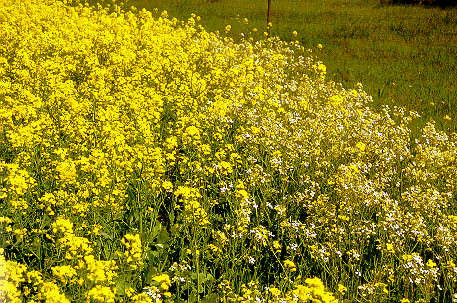
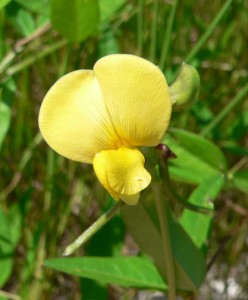

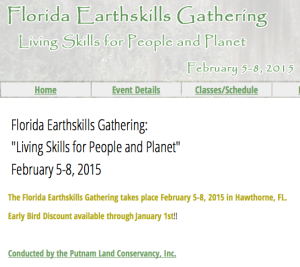
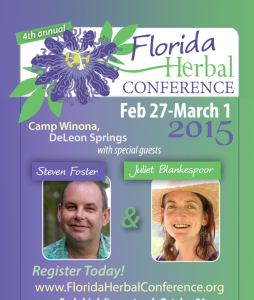
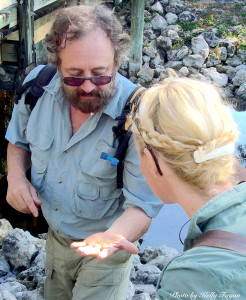
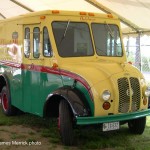

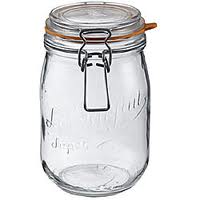
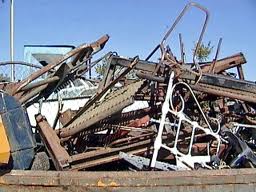
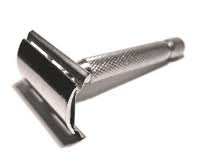
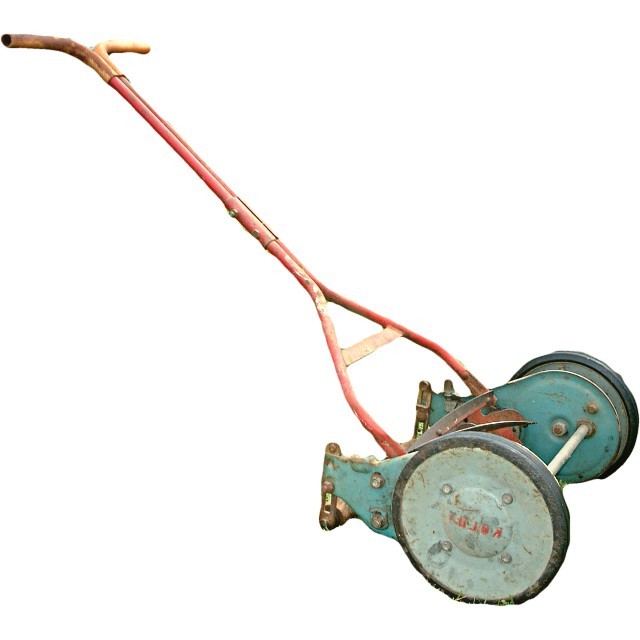
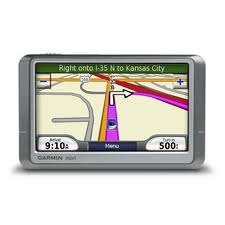

Great post on being green, Dean. I think about these things often, but find it very difficult to live today much different than everyone else; spending too much time making money to pay for the massive amount of recourses it takes to “get by”. I like progress, and I like to see change, but I think the change that the west needs at this point is to reverse just a little. Maybe we could help our selves by planting some things in the front yard instead of using recourses to mow it. This would provide nutrition, health, community, and family along with a mass of positive externalities for the world. Thank for your weekly insight, and I cannot wait for the next time I will be able to join you for a class again. Maybe this would be a little easier if I could slow down a little and try to push backwards rather than struggling toward the Jones’.
Hi, Green, I call Florida betony (Stachys floridana) wild radish, and the edible part is the white grub-looking tuber. I guess you eat the leaves of the yellow-flowered “wild radish” in this issue? [When I paragraph it leaves my message, so I’ll run-on] I loved your piece on “the old days”. Me, too. When I visited my grandparents west of Orlando in the mid-1940s, they had no electricity. Kerosene lamps, kerosene stove, a real ice box and the ice man brought ice, washed dishes in a pan by hand and threw the used water outside on the plants. My grandfather pumped water into a big tank outside; how it got to the kitchen and bathroom I don’t remember. They did have an inside toilet and shower. There weren’t any “no-iron” clothes, and my grandmother heated the iron on the stove. I still have one of her flat-irons. Cooled off by swimming in the lake. Where I lived, my mother and I canned many tomatoes and other vegetables from our own garden, made apple butter from the neighbor’s orchard, and pickles, gathered grapes in the woods to make jelly, and garbage had to be separated so the hog farmer could have the food scraps, cans were buried and paper burned. Yes, we were “greener” then by a lo-o-ong shot.
Bravo Peggy. Love to hear these stories from our youth.
Oh, G.D! What memories that makes me think of. I found myself saying, ‘Well, I STILL do that’. Now, those of us who save these things for ‘future use’ are called Hoarders. Sigh. Thank you for sharing.
My mother was the queen of hoarders… you could find a half a styrofoam cover of the like ’cause you never know when you might need a piece of styrofoam…
Now ‘hoarding’ is officially classified as a mental disorder or disease. Anyone who saves things to reuse or repurpose could be diagnosed as ‘ill’ and possibly loose control of their property, or even their lives. Yes, really.
Well.. I grew up on a working farm and is we had what we needed on hand it save a long trip into particular store. It was part of being self-reliant. Also, if psychologists (who practice a pseudo-science at best) don’t keep inventing things to treat income goes down.
As always it is a pleasure to hear the tales of yeaster-years from like-minded people. Recently I had a doctor’s appointment in a different city and I called to get directions. When a young lady answered I asked if their office was north or south of I-10 the road I would be comming into town on. She again gave me the address and told me to call OnStar or punch it into my GPS. I told her I do not have a GPS. There was a long pause and she asked what kind of car I drive. I said, “Not important, just tell me are you north or south of I-10?” She asked several people in the office and not one could give directions. Sad!
A few weeks ago a dear friend passed away and I took food for the family out of respect. I took several jars of pickles and jam. The children had never seen home-canned items and called later to ask how to get into the jars. I told them like any other jar to unscrew the lid. They said,”We did that but only half the lid came off.” I told them how to pop the inner lid and the process of homecanning. The reply was, “How come you don’t just buy stuff like everybody else?” Sad.
I had exactly the same problem visiting a new dentist. I asked for east of that, west of this, north or south side of the road. She had no idea. So I said “give me a landmark.” What a landmark I was asked. I said don’t bother, I’ll find it, and I did… literally across the street from a large hospital…
yup…i’m a new fashioned “hoarder”…. albeit organized hoarder. glass bottles, paper, styrofoam, plastic containers, you name it. can’t “even” throw out perfectly reusable plastic bags that everything comes wrapped in. gotta admit, though, i’m very guilty of the blender use! love my blender.
Great Article!
I’ve been there, done that and still do all I can to “keep it green”.
Thanks
This article is so true, how we can believe we are becoming smarter and greener and evolving is beyond me. A well written piece.
As a horticulturist and landscaper I still feel in some situations (not all), that the environment and the green movement is a token effort especially in western cultures. Our vertical gardens and greener office spaces are tactics employed by business in there architectural designs to get buildings passed and seeming to promote a green image because it’s trendy. Rarely are the plant species endemic,to the site.
The Asians on the other hand in this next century will show us what it is to be green. Just take a look at what China did on the Loess plateau restoration project or what’s happening in Singapore.
Westerners love to talk about it and ponder over a coffee.
Asians just get out there and do it. This is a position America should be leading the world in but sadly while the Pentagon (which is a front for resources companies ) Anyway speaking from a british colony in the pacific ocean the US is looking more and more like “The land of the trapped and the home of the Ni-eve”.
And it pains me to say that
As have relatives in the States and love many things the US has and has done.
What have we at all learnt from Easter Island.
Nice article Dean.
Matt, your words in the comments you posted here are very thoughtful and thought-provoking as well. I live Stateside and I often think of those things as well.
Here at my home, I grow most of our vegetables — in the front yard as a “landscape” where neighbors can come by and pick some lettuce, etc. for salads and kale, broccoli, etc., for cooking. They don’t. Several have asked me why I do that and my answer is always, “If we all did this, we’d all have fresh, locally-grown and organic produce available year-round for each other.” That’s my major way of “going green.” Unfortunately, none of them are interested in that idea but they’re all as green as heck in other trendy ways.
Okay, I’m done whining… LOL … your post was appreciated by me and I share your concern.
Appreciate the rant. The mindset was a much different one back then. Abundance of unnecessary products creates waste and my generation seems to be seduced by it. Besides corporate environmental disasters (they still happen today), I would agree it was a very much “greener” and less developed world.
Looking forward to meeting you at Earthskills!
I lived on a boat for 7 years, I had 4 lightbulbs and a battery pack (for the 4 lightbulbs). Everything I did or owned was manual power, ditto for the 5 years I lived in a trailer before. I now live in a tiny house and it is almost all manual, I mash potatos with a potato masher, grind herbs in a mortar and pestle and slice things with either a knife or a mandolin, grate cheese with a microplane that also grates nutmeg, orange peel and anything else that needs grating. All my appliances fit in one draw. I haven’t bought a new piece of outer clothing (intimates I still purchase new) in the last 25 years and I know how to spin, dye and knit or crochet cloth from a sheep to sweater. I grew up on the edge of technology, we used typewriters into my 20’s then gradually made the switch over to computers in my twenties. It was just plain simpler back then, fewer choices and everyone I knew was in the same boat and did the same gardening and had the same woodchucks eating our cabages. Having the ability to clearly remember it both ways, its easier now but I still check books out of the library rather than purchase for my kindle.
Wow, I would so love to go to one of those gatherings if only I could come up with the cash! And then there’s the problem of transportation! But I can dream!
I’m a CT transplant now living outside of Ft Myers with a decent mental library of northern wild edibles, but after a decade here, and recent health improvement, I am really interested in getting up to speed on the local consumables. Not only do I love the variety and health properties, but with a tight budget, it sure helps to know some local goodies to supplement the grocery outlay! I have learned to love nopales and have “accidentally” dropped a few pads in vacant areas just in case they want to procreate…kind of a cheat for foraging, but hey! They even work great in my fermented salsa…every time I make it I keep adding more and now I can leave out the tomatillos and save the cost. Not quite the same, but a good sub!
Gotta love the internet for learning, but nothing like hands on for ID’ing the real thing. Your site really helps Dean, thanks so much for all you do! Sure wish you were MY neighbor!
Loved your editorial, Deane. Overall, I was raised the same way and, to be honest with you, I think we were a lot happier, healthier and resilient than folks are today. If we look at the escalation of diseases it seems to me that we are – here in the USA – a lot sicker than we used to be. We don’t live as long as those in other Westernized countries that don’t use GMO’s or virulent pesticides or control what cheeses come from raw milk or pasturized… Back then, we really did do things together and were responsible and respectful in our lives. I’m not against technological development but I think as “users” we need to be thoughtful/discerning as to which technologies we bring into our homes and to our children.
Now I need a wax myrtle just to tinker with the candle thingy. Sigh.
Great thoughts on the ‘green old days’! I still live that way (minus the milk truck, sadly.)
I enjoy looking at Vigna anguiculata throughout its stages of growth particularly when it is a seedling. I find myself eager to see the beautiful pattern of those rows of somewhat widely spaced seedlings and well arranged in steps (terraces) conformable with the level of retreat of the River Nile and also of its tributaries. This kind of farming where there is no need for further irrigation is locally called “jrouf farming”.
“How ungreen of us” expresses a relationship between time of glory and happiness during our past days of youth when people were kind and passionate and used to enjoy the benefits of prosperous economy and most of everyday life matters running smoothly as compared to the present time when intensive “ strugle for existence” and egoism are dominant among society members. Using my mother tongue, “Yahlail zumun elsiba”, a title of a song as equivalent to the above expression, I should like to give but a few examples of past days of youth. We were living a simple life in rooms built of local material – mud bricks – much suitable to cause healthy ventilation throughout the year in this part of the world without resort to coolers and air conditioners; thus no back ace or other syndromes of the present. Our local bread “Kisra” was made of whole “dura” flour – Sudan sorgum – more nutritious compared to the present bromate polluted bread of today from which people are suffering a lot – all because of the lust of the richer to get more rich. At this moment though I’m happy playing with my one year old grandson nicknamed “Hummoudi” , I’m facing a picture of a pseudo crocodile printed on his shirt of unknown fabric and on it written: “I’m Big Trouble”. A picture of a rose a butterfly , or a kitten was once decorating the cotton “Sulma’s ” – my daughter ,vis his mother. However, the little lady, his sister – “ Yusra “ -three years old wears a shirt having a picture of a cup of an ice cream pink coloured seemingly with a preservative.
May I finish with: “The saddest aspect of life right now is that science gathers knowledge faster than society gathers wisdom”….Isaac Asimov, and “He has achieved success who has never lacked appreciation of Earth’s beauty or failed to express it.” ….Bissie Anderson Stanley.
Still so enjoying your newsletters. Thanks for the reminder that I want to put a clothes hanger outside. I’m still learning about canning. Bout to do some pickled eggs from my lady hens, and then make some homemade kimchi.
So much of what passes for progress just isn’t.
Greene Deane u said a mouthful there…I remember straightening nails, respect using almost everything till it worn out and then some, opening canned jars of homemade applesauce homemade apple butter, canned sauerkraut , etc… Feeding the cattle sheep goats pigs Rabbits horses cows and chickens, we handpicked corn and loaded it in a bag on a horse and took it home and hand ground the corn off the cob, our garden was a big one u dug it by hand till dad bought a tiller hard work and compost piles were the norm, we handed our used clothing to cousins too who couldn’t afford things, but the best part was knowing where our food came from smelling homemade bread cookies etc.. we heated the house with wood and I’d cut it stack it every evening then do my schoolwork and imagine that We did it all without modern conveniences… no cell phones computers our first TV was like Urs a small Black and white TV was the thing we had .. friend used to come over watch wrestling and basketball games play euchre etc… fun filled nights they were.. today’s kids really miss out on things not a better way to learn responsibility… foraging forays were held by the kids to see who could gather enough for a pie or ice cream what fun it was.. Thanks for the memories
Oh yeah We milked the cows till we got rid of them and then the milkman would come by… nothing like fresh milk straight from the cow,…. singing sos whole granma played the piano and making homemade icecream… I’m so lucky to have been raised this way
We didn’t get our TV till I was 14, in 1964. We moved from the small brick starter house in S Arlington, Northern VA suburbs of DC, to the Exurbs of Springfield, VA, and a covenanted neighborhood that forbade clotheslines and compost piles, among other things. My father worked for USDA and we butted heads many times- him preaching the standard “Get bigger or get out!” type of farming that USDA was starting to promulgate.
All I wanted to be was a farmer or a professor of English Lit, sigh.
Since retirement 6/1 my goal has been to treat gardening and possibly foraging with all the seriousness of a graduate student or a full time career.
Unfortunately, altho I would LIKE to hand grind grains, chop wood and haul slops and salt sheep, physical reality in the form of arthritis exacerbating several job related injuries makes it impossible and is even starting to make my question my commitment to as extensive a garden as I now have- on a retirement home lot, and my city lot 2 hours away..